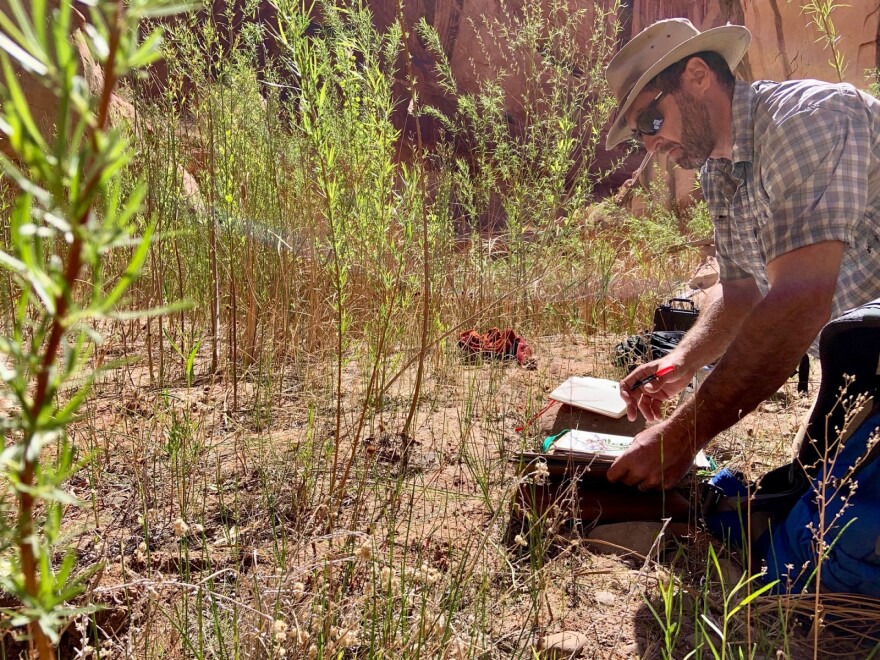Environmentalists have talked about restoring Glen Canyon ever since it was filled with water in the 1960s, according to Eric Balken, director of the Glen Canyon Institute.
Before the dam, the gorges and grottos of the canyon contained more than 79 species of plants, 189 species of birds, 34 species of mammals and more than 3,000 ancient ruins according to the institute.
The group’s original goal was to drain Lake Powell and bring it back to life. To do that, they lobbied for the removal of the dam. But now, Balken said, climate change is draining the lake naturally.
“The transformation that’s happening in Glen Canyon right now is absolutely remarkable,” he said. “There are hundreds of acres and hundreds of newly flowing creeks and streams and rivers.”
Balken and others have been informally documenting the changes occuring in the canyon as the water recedes, including the re-emergence of rapids in Cataract Canyon and the return of native ecosystems. He and a group of scientists recently visited the canyon.
“We saw these orchids and maidenhair ferns growing out of the walls that can only grow with healthy subsoil,” he said. “It’s really clear that, given enough time, these canyons have the ability to return to what they were.”

Seth Arens is an ecologist and climate scientist with Western Water Assessment. He accompanied Balken on the trip. He said while the ecosystems aren’t exactly the same as they once were, because of the sediment left behind by the lake, life is returning to the canyon at a rapid pace.
“In a desert environment, where we think of things being slow to grow, the speed at which ecosystems are reestablishing in these areas is pretty remarkable,” Arens said.
He said the return of native ecosystems raises an interesting question: Should the dry parts of the canyon be actively managed, or should they continue to be treated like the bottom of a water tank?
Arens said he predicts Lake Powell will reach its lowest point ever this year, due to the prolonged drought in southern Utah. It will also likely continue to drop due to climate change.
“It’s exceptionally unlikely that both reservoirs fill to 100% again,” Arens said. “So, if that’s true, some of this landscape that’s already been established will become a permanent feature.”

But for the Glen Canyon Institute, that’s not enough. It wants water managers to allow any excess water that comes into Lake Powell to flow downstream into Lake Mead. Balken said that would keep parts of the canyon that have emerged, like Cathedral in the Desert, from being re-flooded.
The famous natural amphitheater dried out in 2005, only to be drowned again, before reemerging again in 2019. Balken and Arens visited it on their recent trip.
“The original floor is probably 25 feet higher than it used to be because of the sediment that’s deposited in there,” Balken said. “But going in there, you cannot help but be overcome.”





